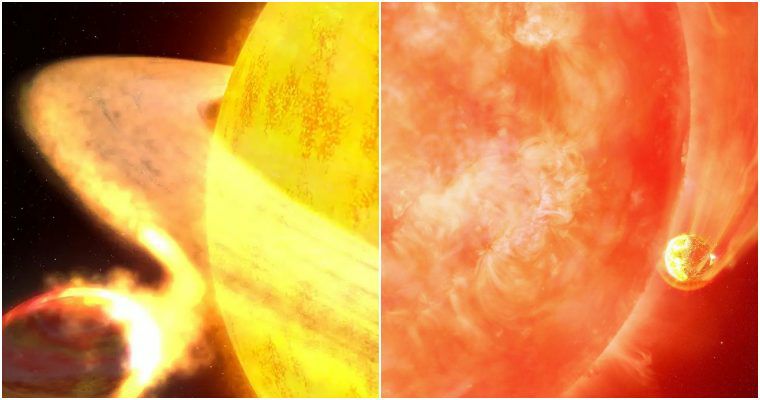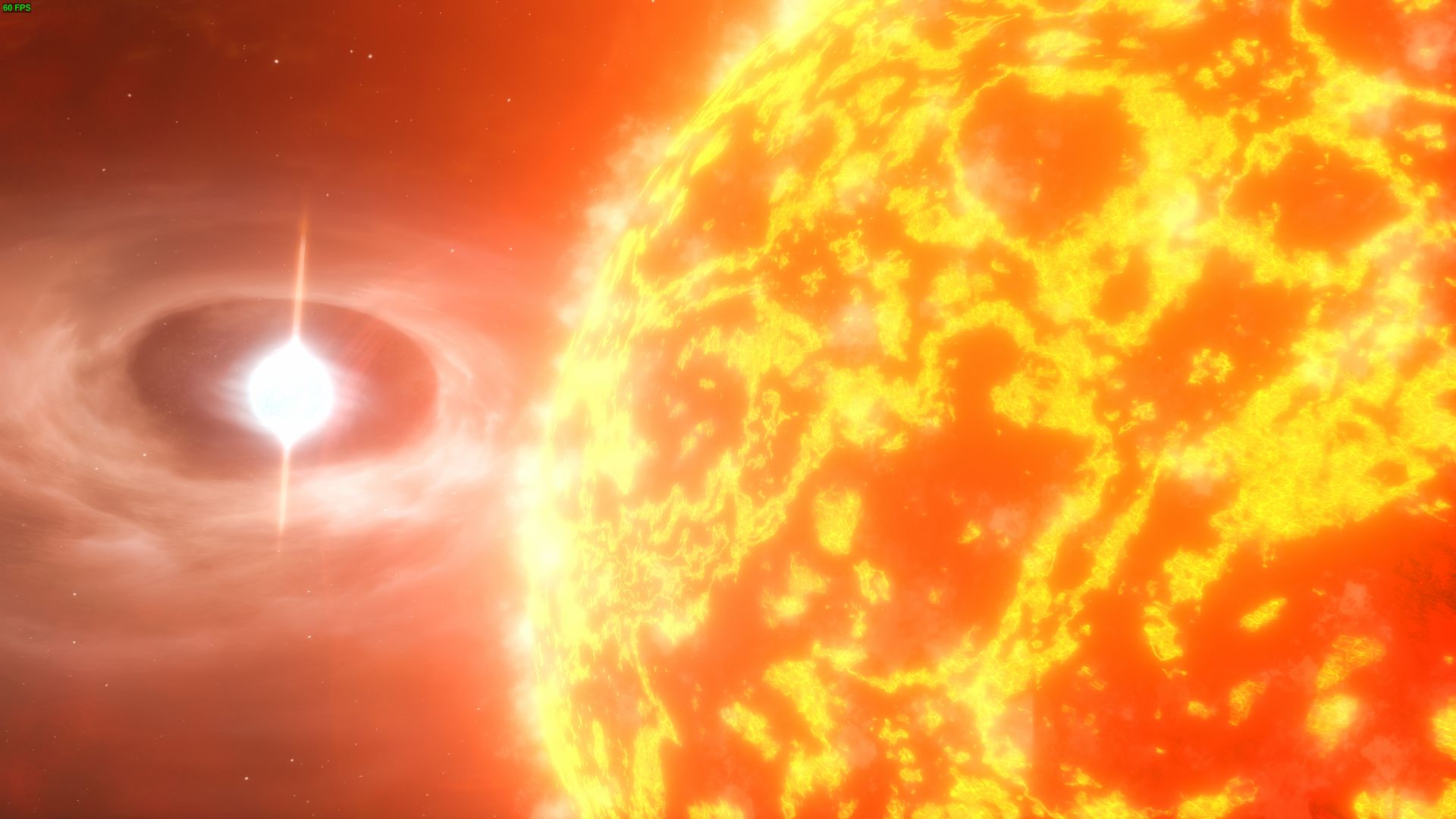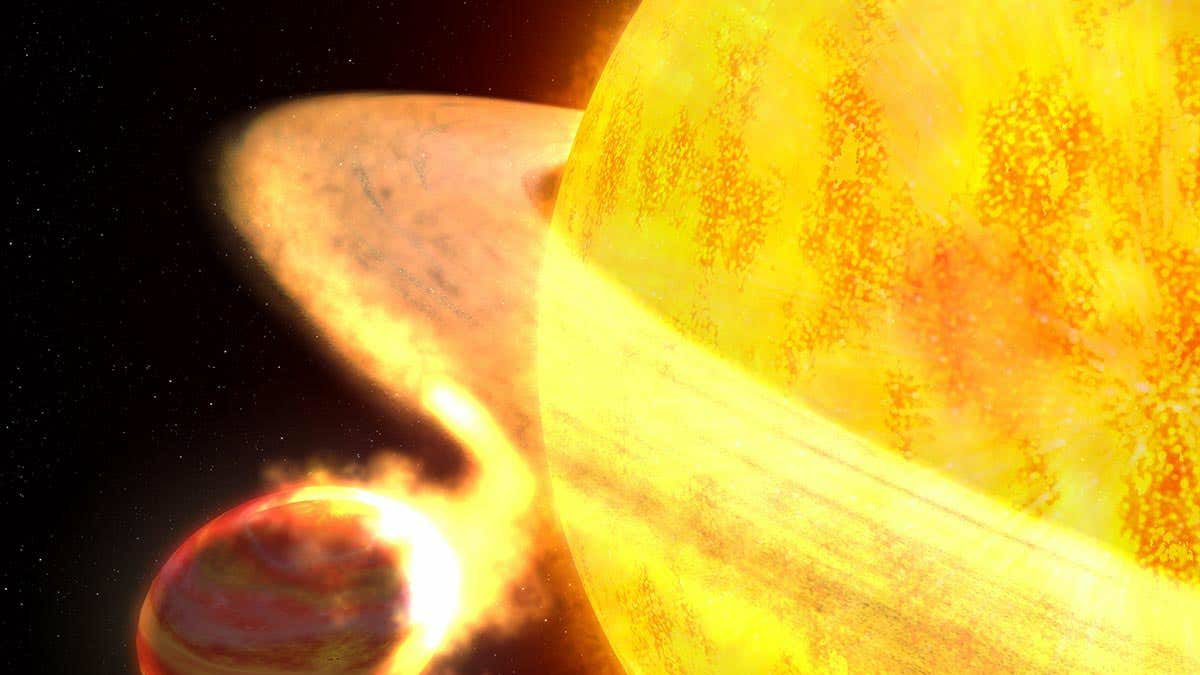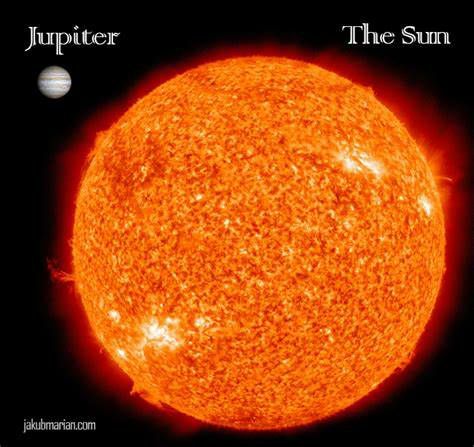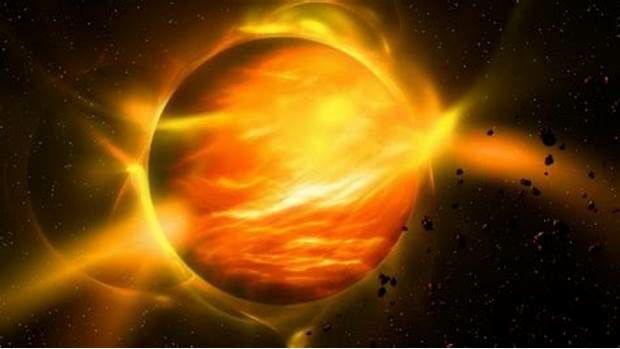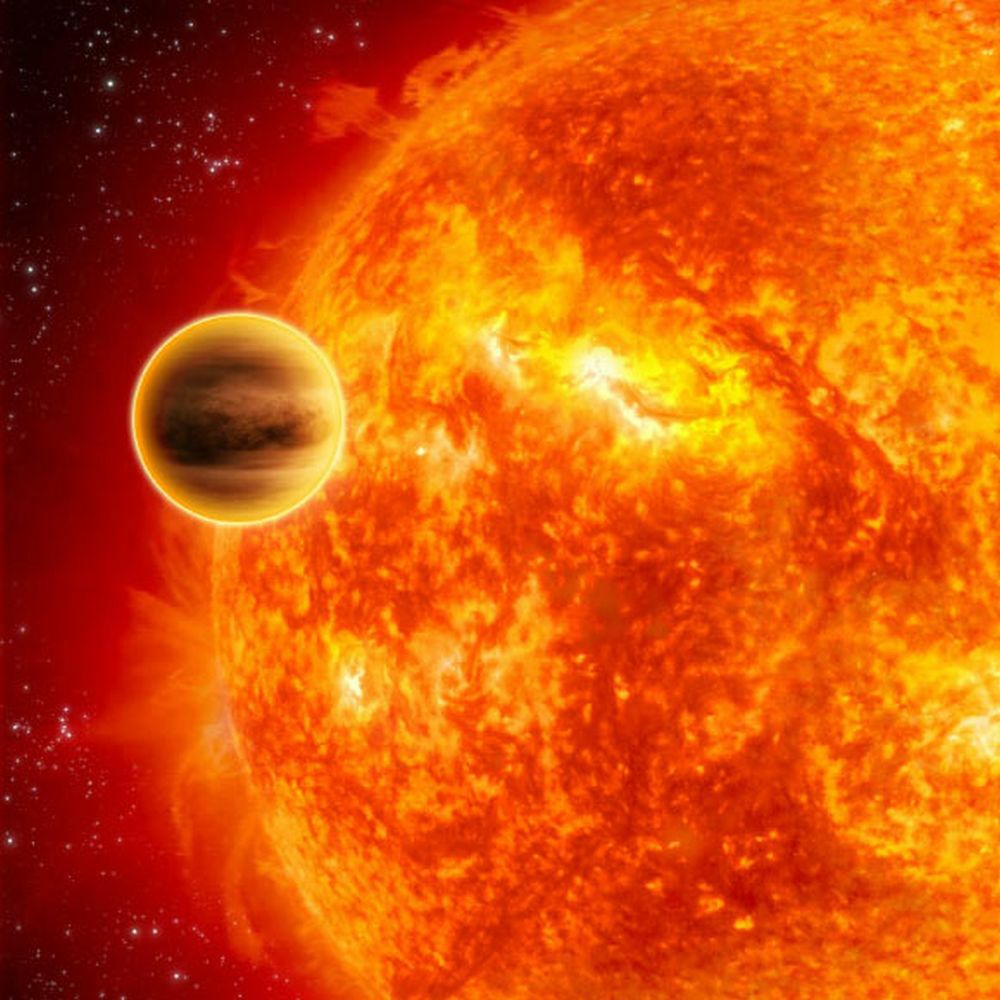Ten Percent of Stars Consumed a Jupiter-Sized (or Larger) Object.
In the vast expanse of space, stars and planets engage in a mesmerizing dance, often leading to cataclysmic events of astronomical proportions. Supernovae and black holes wreak havoc among stars, but stars themselves play the role of the destructive force when it comes to planets. A recent study has delved deeper into the process of planetary engulfment by evolved stars, unraveling the intricacies of this awe-inspiring phenomenon.
Titled “Giant planet engulfment by evolved giant stars: light curves, asteroseismology, and survivability,” the study offers a groundbreaking insight into the likelihood of one in ten evolved stars in the Milky Way engulfing Jupiter-mass planets. The focus of the research centers on two types of evolved stars: the Red Giant Branch (RGB) stars and the Asymptotic Giant Branch (AGB) stars. As these stars evolve, they lose mass, causing them to expand and ensnare any nearby planets in their gravitational grip. The star’s convective envelope swells, creating a drag that draws the planet inward towards its fiery core.
To gain a better understanding of this process, the researchers employed an open-source astronomy software tool called MESA. Their calculations revealed that approximately 10% of Sun-like stars with masses ranging from 1 to 2 solar masses will eventually engulf planets weighing between 1 to 10 Jupiter masses. The process of in-spiral, during which the planet spirals inward towards the star, takes place over the course of 10 to 100 years or between 100 and 1000 orbits. The study meticulously explores the frequency of these events and how stars respond to engulfing planets with different masses.
The engulfment process unfolds in two distinct phases. The first phase involves tidal friction causing the planet’s orbital decay, while the second phase, known as the ‘grazing’ phase, involves drag forces as the star and planet make physical contact. During the ‘inspiral’ phase, when the planet is completely immersed in the star’s envelope, it deposits heat into the star, significantly affecting the star’s response. The mass of the planet dictates the amount of heat deposited, making it a crucial factor in this celestial dance.
Although planetary engulfment is a relatively swift process, unfolding over years rather than millions of years, the complexities of the grazing phase introduce phenomena such as the expulsion of matter from the star and optical and X-ray transients triggered by shocks. The study, however, primarily focuses on the later inspiral phase of engulfment, setting these other fascinating phenomena aside for future investigations.
A recent paper presents captivating findings on the heat deposition in stars during the later inspiral phase, particularly when engulfing planets. Utilizing simulations to model host stars of different masses, represented by RGBs and AGBs, the researchers unveiled a direct correlation between the planetary mass and the amount of heat deposited, a significant discovery.
Throughout the engulfment process, the stellar envelope experiences multiple expansions and contractions, creating a non-monotonic pattern. Visualizing the planet as a local heat source within the shell, moving towards the center of the star, explains the varied expansions and contractions observed. The research findings further supported previous studies that demonstrated how planet engulfment led to optical and infrared bursts in luminosity. The intensity and duration of these bursts depend primarily on the mass of the planet and the star, with additional factors such as rotation potentially influencing the outcome. For stars engulfing planets up to five Jupiter masses, the brightness of the star significantly increased within a few years, with brighter stars exhibiting a double peak in luminosity.
In the advanced stages of the AGB phase, the engulfment of a planet could induce significant disturbances in the outer layers, leading to phenomena resembling Luminous Red Novae (LRN), characterized by bright, red, and dusty eruptions.
Regardless of the star type, the mass of the engulfed planet, or the star’s response to the engulfment, the ultimate fate of the planet remained constant: tidal disruption.
It is essential to note that the findings of this study have limited applicability to our own Solar System. While our Sun is expected to become a red giant in several billion years, it is unlikely that Jupiter will be engulfed unless an extremely disruptive event occurs. However, the inner rocky planets may eventually face such a fate.
Although the study was based on simulations rather than direct observations, it holds tremendous potential in aiding astronomers in identifying real-life instances of engulfment events. Engulfments are transient phenomena, and existing and future telescopes and observatories focusing on studying transients and time-domain astronomy can benefit greatly. The forthcoming Vera Rubin Observatory, expected to be operational by August 2024, will be particularly adept at detecting numerous transient events, including evolved stars engulfing Jupiter-mass planets.
The study’s results provide valuable insights that could facilitate the identification and understanding of engulfment events in various stellar systems, offering a glimpse into the extraordinary phenomena occurring in the universe. As we continue to peer into the cosmos, the mysteries of star-planet interactions unfold, unveiling the beauty and complexity of the celestial ballet happening far beyond our world.
Hits: 0
